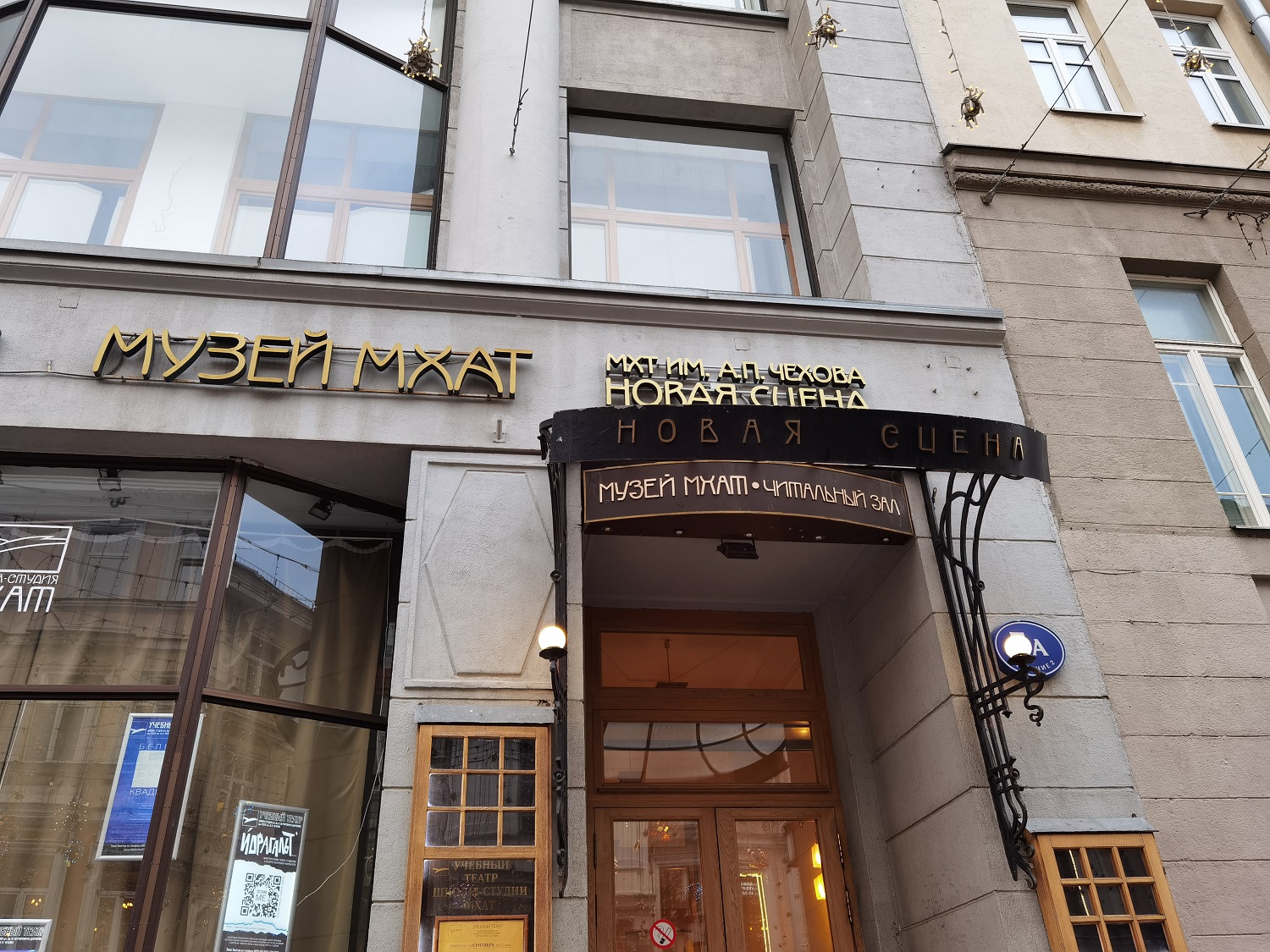На месте бывшего флигеля усадьбы Одоевских предполагалось строительство «научного электротеатра» и помещения для театра-кабаре Н.Ф. Балиева «Летучая мышь». Но, вместо этого, помещения стали сдавать внаём под размещение магазинов, контор и проведение выставок.
Работая над проектом здания, архитектор Ф.О. Шехтель проявил себя как мастер четкого геометрического рисунка. Для фасада было предложено лаконичное решение в крупных формах. Архитектор использовал характерный приём построения лицевой части здания: и в высоту, и в ширину она была разделена на три неравные части. Средняя часть по вертикали имеет ордерное построение. Изящность фасада достигается за счет стеклянного эркера необычной формы с дорическими колоннами по бокам. Прямоугольное в плане здание вдается вглубь участка.
Особого внимания заслуживает внутреннее устройство: каркасная металло-кирпичная конструкция позволяла произвольно менять планировку помещений с помощью внутренних перегородок и превращать любой из четырех этажей в один зал.
В годы Первой мировой войны в этом доме размещался госпиталь. Позднее здесь проходили выставки «Товарищества передвижных художественных выставок», а до 1939 года находились общежитие рабфака и столовая Московского университета имени М.Н. Покровского. Потом здание было передано Московскому Художественному театру. В здании располагается Учебный театр Школы-студии МХАТ.
Осенью 1923 года в проезде Художественного театра (ныне Камергерский переулок) по инициативе основателя Московского Художественного театра, режиссера, актера и теоретика сценического искусства Константина Сергеевича Станиславского был основан Музей МХАТ.
Сегодня коллекция музея насчитывает свыше 330 тыс. предметов, среди которых исторические свидетельства времени, связанные с работой легендарного театра, макеты, живопись, графика, сценические костюмы и театральные реликвии. Постоянная экспозиция размещена на 2-м этаже театра (вход на Малую сцену МХТ имени А.П. Чехова).














%20BEL_0521.jpg&w=1920&q=75)





